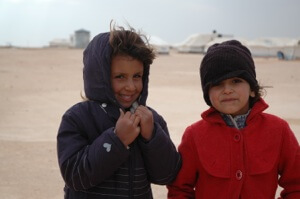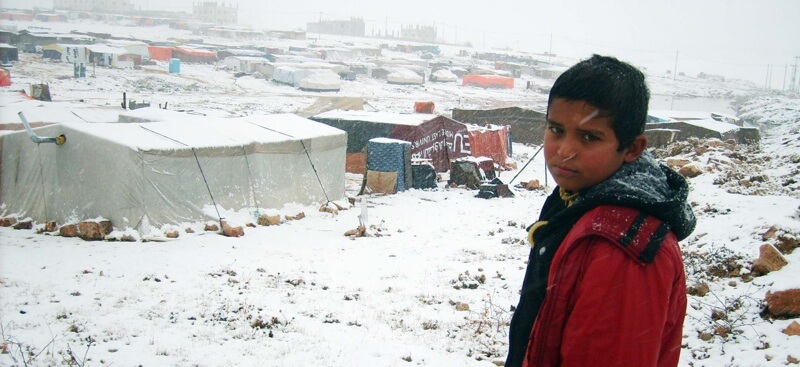 Warm blankets for cold days
Warm blankets for cold days
Winter aid for the refugees of the Syrian civil war in Jordan and Lebanon
In the history of Syria there have been glorious days. As part of the Roman Empire, it was one of the richest provinces. Before the current civil war, Syria had a medium level of development in international comparison. There was a growing educated middle class with a living standard comparable to Europe: TV, cars, good clothing and vacations in Greece, until the Spring of 2011.
Necessity
Protection from cold and wet during the winter months and disease prevention.
Activity
Purchase (if possible locally) and distribution of blankets, winter clothes, ovens, heating materials, and weatherproof shelters; provision of drinking water, hygiene articles, and sanitary facilities
Countable effort
Amount of women, men, and children who are spending the night in a warm shelter
Result
Measurable improvement of the health situation of the refugees
Systemic effect
Return to a peaceful Syria, rebuilding of livelihoods in peace and security
Background
In early 2011, protests against the government of President Bashar al-Assad developed into a civil war that has cost the lives of over 100,000 people so far and lead to 6.5 million fleeing from the combat. More than 2.5 million refugees, half of them children, fled to the neighboring countries. The refugees fear for their lives and are forced to leave their homes, their families and their jobs behind. When they arrive in Jordan or Lebanon, many of them own only the clothes they are wearing and find their way to the official refugee camps. The best known and biggest camp is Zaatari in Jordan, offering protection for over 100,000 people. Even more refugees are stranded outside the camps. They rent rooms or garages, settle in abandoned houses, or live in tent villages at the border of Jordanian or Lebanese cities. Many refugees are well educated: they are hair dressers, bakers, masons, architects, or teachers. Now, they are without jobs and incomes. The citizens of Jordan and the Lebanon have accommodated the refugees with great solidarity, however, the local infrastructure and social services have limits. Children cannot go to school and healthcare is insufficient. During the cold winter months, the biggest challenge for the refugees is to heat the provisional and wet shelters. Warm blankets, winter clothes and ovens prevent diseases from spreading and make survival possible.
The good deed
First and foremost, the people fleeing from the civil war have to survive. During the cold winter months the biggest challenge is to heat the provisional and wet shelters. Warm blankets, winter clothes and ovens prevent diseases from spreading and make survival possible.
Challenge
A challenge to the winter aid program is the immense need for relief items and their distribution: the participating aid organizations and the UN are working hand-in-hand to cover the demand. The situation for the refugees living outside the camps are particularly precarious. It is not easy to identify the need and provide goods. To face this challenge, Oxfam is cooperating with local partners which are familiar with the locations.

AboutSyria
Damascus
Capital
6.637.550
Number of inhabitants
5,174 USD
Gross domestic product per capita per year
116
Human Development Index
Six out of the 44 sites listed by the UNESCO as endangered world heritage sites are located in Syria, i.e. more than in any country in the world.
About the organization and further information
Association
Oxfam Deutschland e.V.
DZI-Spendensiegel, Venro Verhaltenskodex, Initiative Transparente Zivilgesellschaft




